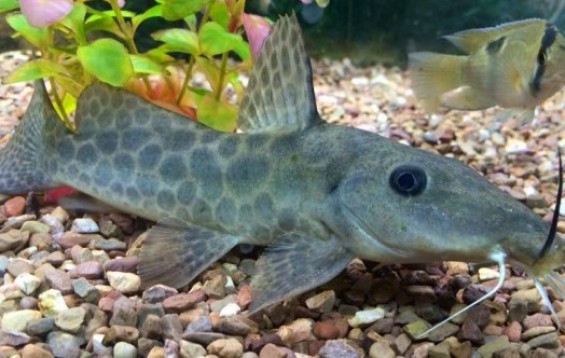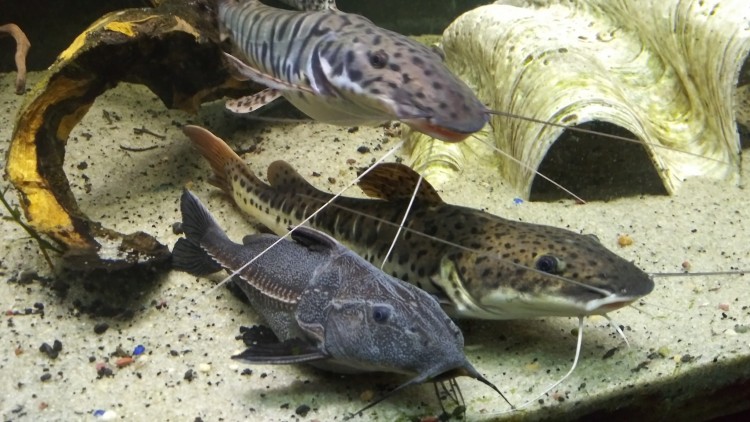- Name:
Giraffe Nosed Catfish
(View AKA's) - Family: Claroteidae
- Species: Catfish
- Scientific Name: Auchenoglanis occidentalis


General info about Giraffe Nosed Catfish
Auchenoglanis occidentalis has a life span of 8 to 18 years and the average adult is 27 inches. They have a yellow base color with dark brown on top, similar to a giraffe’s pattern, hence its common name. Due to its large size, a large aquarium with excellent filtration is a must. They prefer soft substrate and hiding places should be provided since this species doesn’t appreciate bright light. Since it is a peaceful and sociable species they can be kept in a community aquarium as long as their tankmates are larger than its mouth
Giraffe Nosed Catfish Diet & Nutrition
This species is omnivorous, it feeds on plankton, invertebrates and detritus. In an aquarium it can be fed with prepared foods, live foods or frozen foods.
Determining Sex of Giraffe Nosed Catfish
It is not possible do determine sex just by looking, however, if a female is pregnant she will appear wider than the other individuals.
Breeding & Spawning Giraffe Nosed Catfish
Nested eggs are guarded by the male parent. The male parent may also host the eggs and young of Dinotopterus cunningtoni which takes advantage of the already prepared nest. This is an example of interspecific brood care.
Giraffe Nosed Catfish Origin
This species can be found throughout Africa’s lakes and large rivers that have shallow water and soft substrate.
Original Detail
| Name | Species | Family | Scientific Name | More Detail | Added by |
|---|---|---|---|---|---|
| Giraffe Nosed Catfish | Catfish | Claroteidae | Auchenoglanis occidentalis | Auchenoglanis occidentalis has a life span of 8 to 18 years and the average adult is 27 inches. They have a yellow base color with dark brown on top, similar to a giraffe’s pattern, hence its common name. Due to its large size, a large aquarium with excellent filtration is a must. They prefer soft substrate and hiding places should be provided since this species doesn’t appreciate bright light. Since it is a peaceful and sociable species they can be kept in a community aquarium as long as their tankmates are larger than its mouth |
PalaciosAn |



